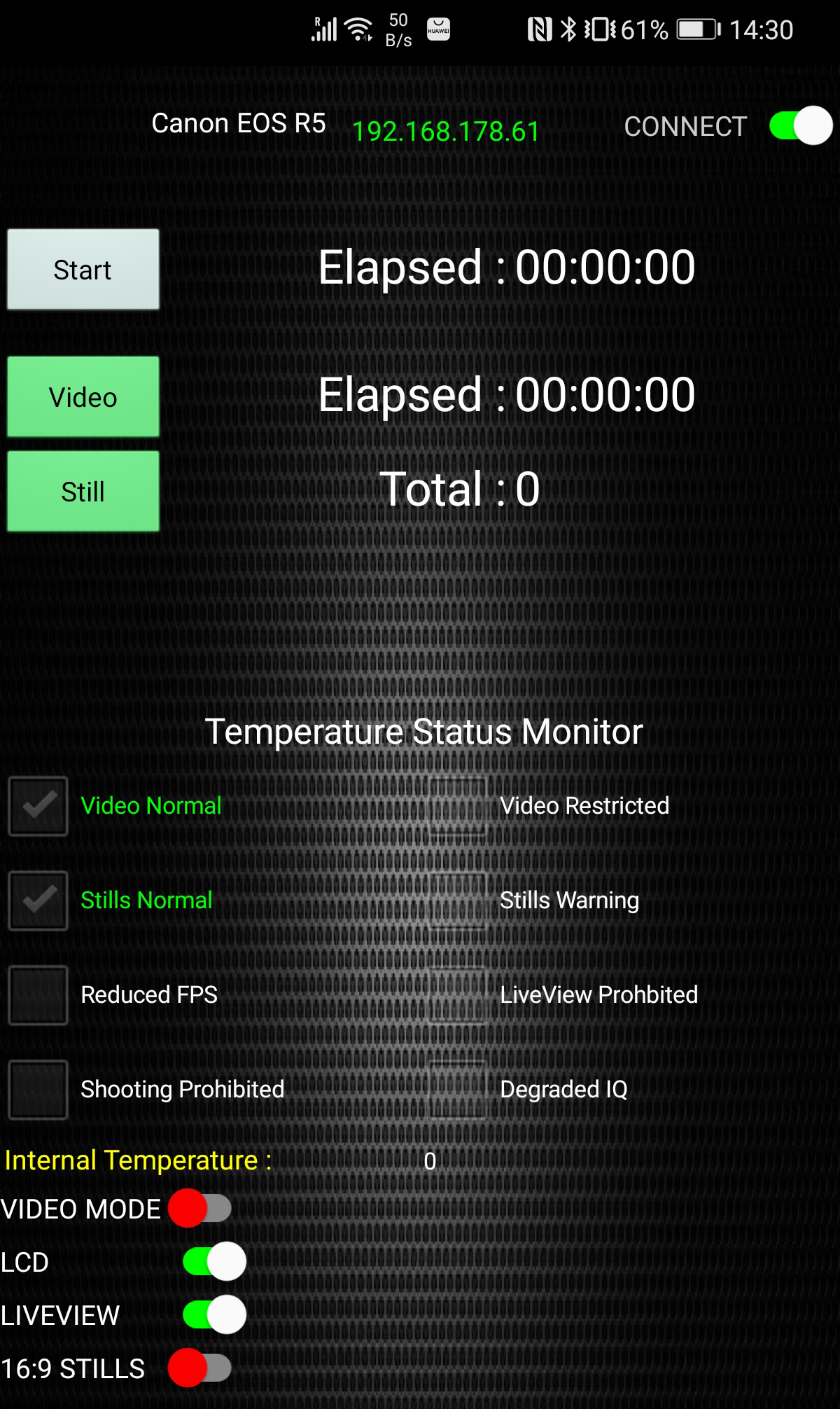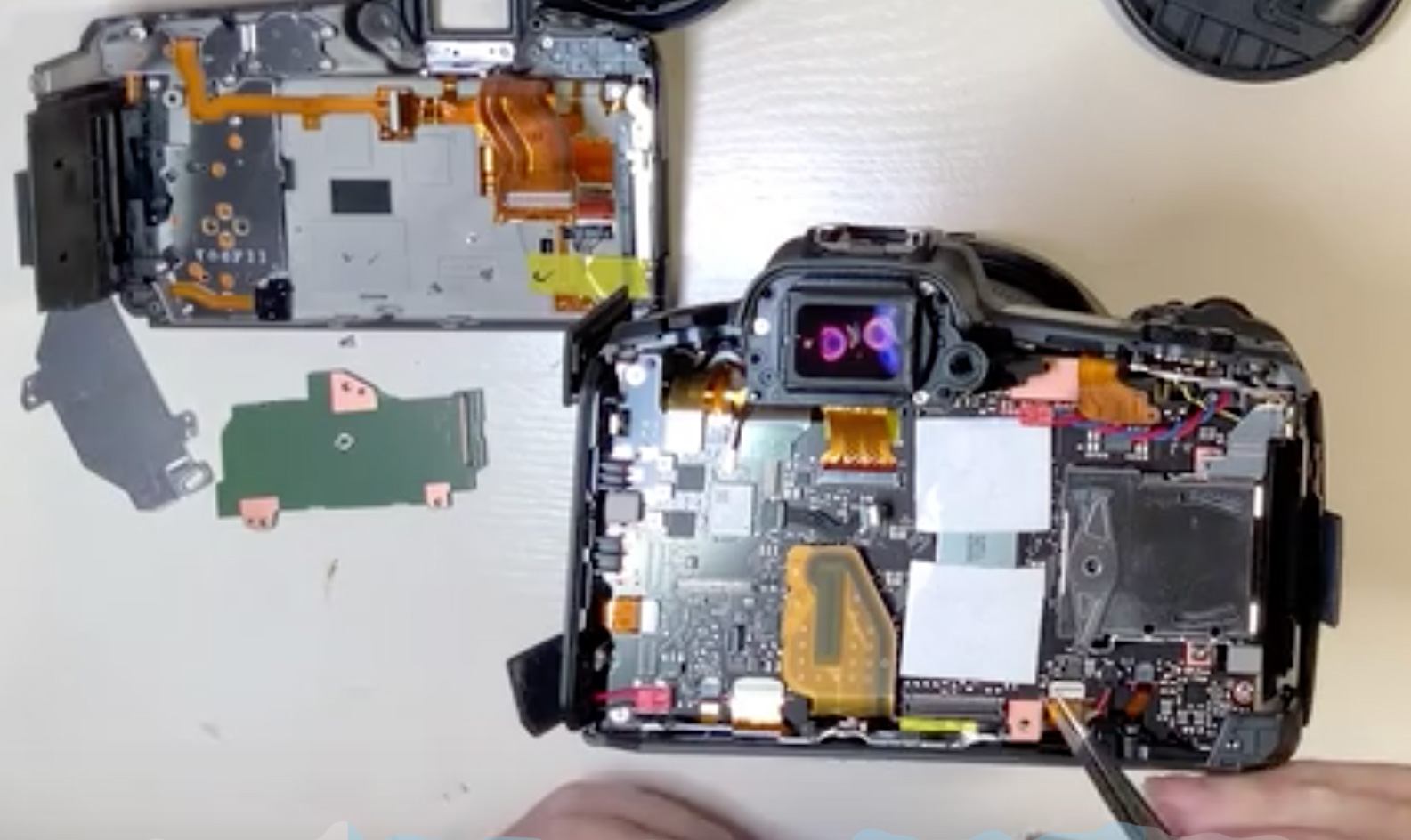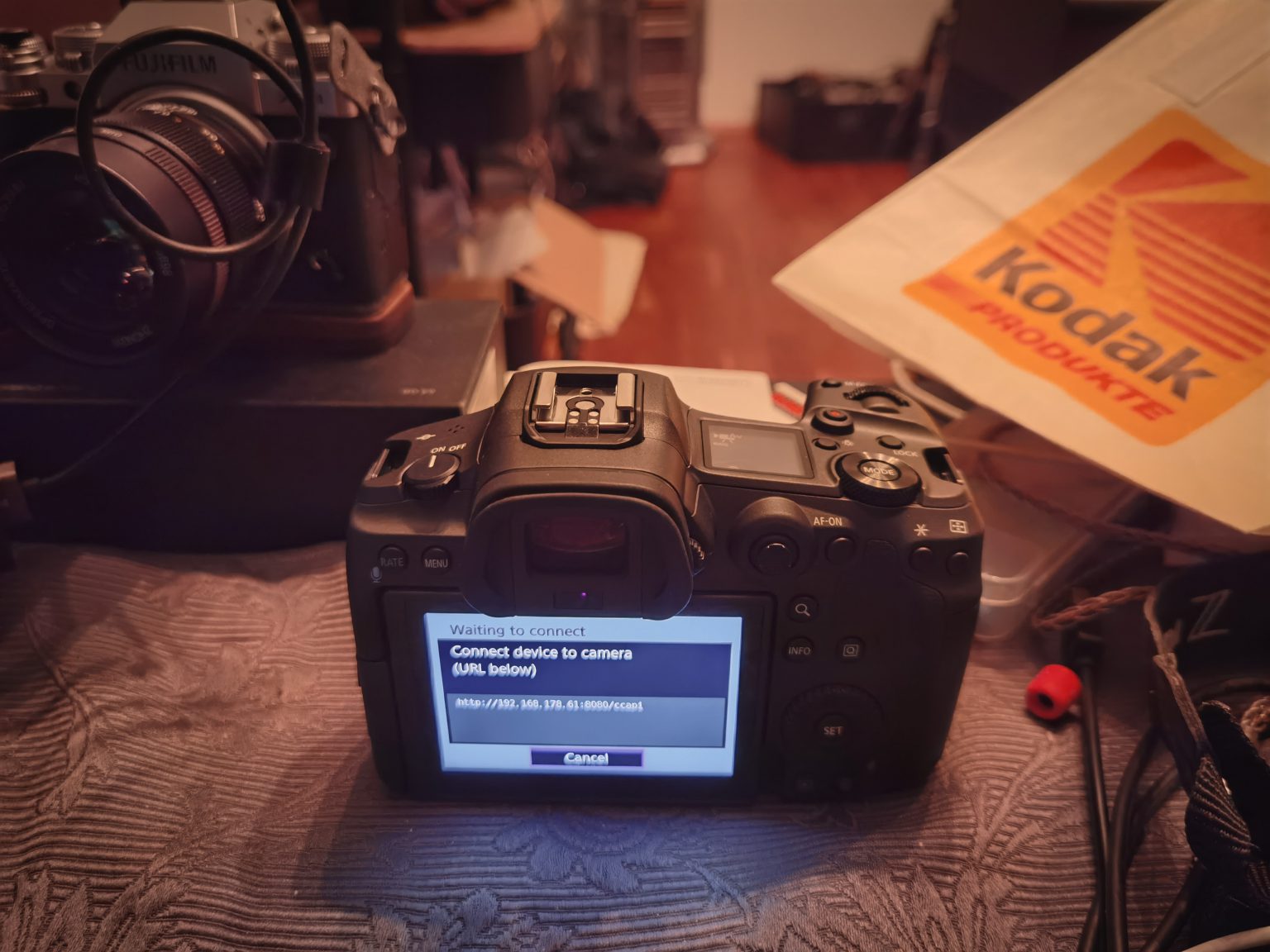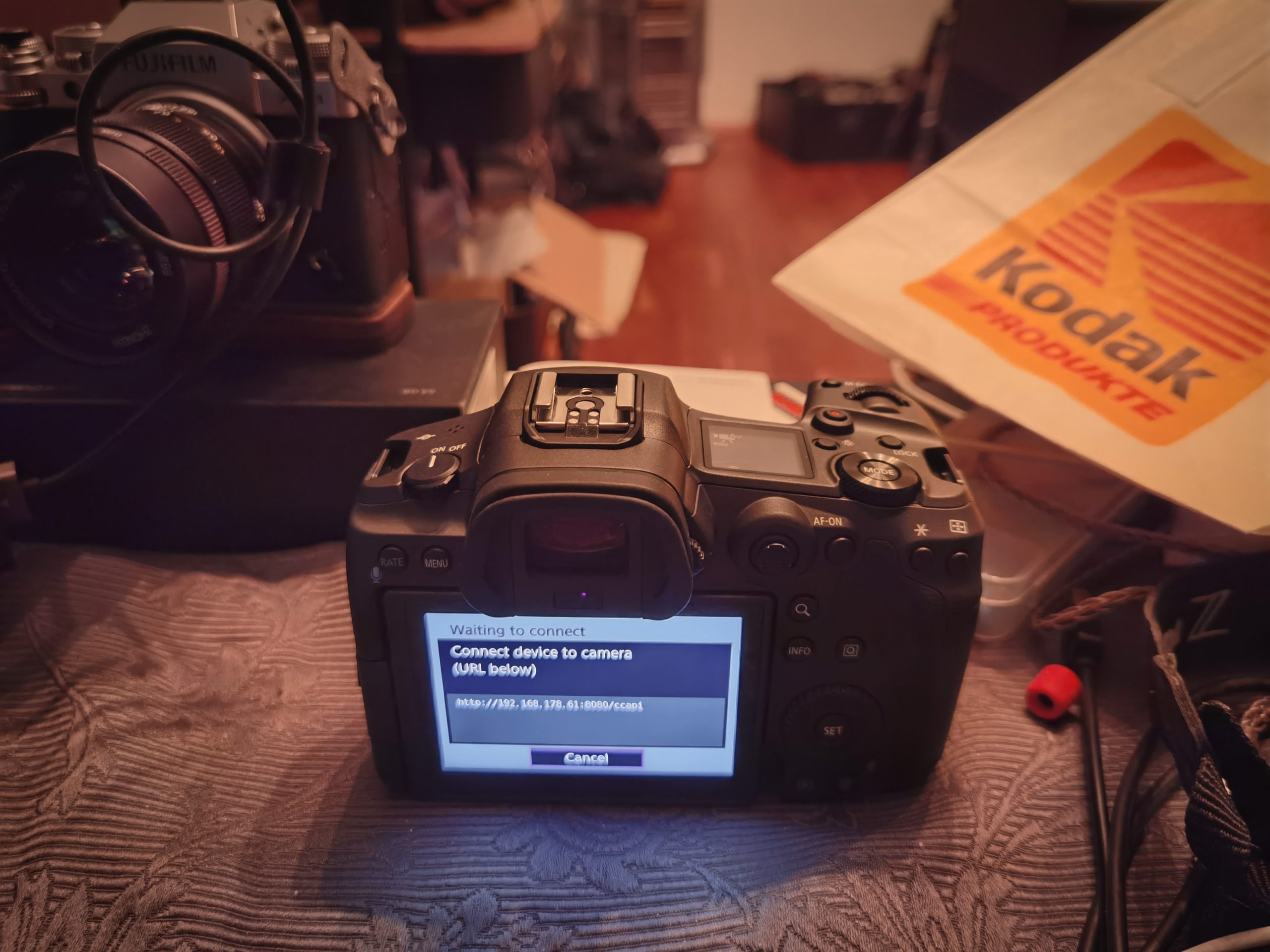
At the weekend I bought the enigma that is the EOS R5 for myself. Foto-Meyer in Berlin were able to find me a rare unit. What all EOS R5 owners have in common is that they have paid a lot of money for a professional video tool. We pay the money, we get to decide what happens next, and I’ll be reaching out to Canon and making this clear. We need to ask them to work on a solution for overheating. It’s worse than you can possibly imagine.
Just need to get something straight – my purchase is NOT an endorsement of the EOS R5. I bought it purely to cover the camera on EOSHD and to help work on fixes for the many issues this camera has. It is in no way a dependable tool for 8K, RAW, slow-mo, high quality 4K or 4K 60p in the state that it’s in. At the very maximum it is a pixel binned 4K 30p camera similar to the Sony A7R IV with the benefits of Canon’s colour science, 10bit codec, top LCD and better ergonomics. Actually that doesn’t sound so bad – but this is not how it was sold to us. It is supposed to be a 4 grand all singing, all dancing, cutting edge 8K/4K video tool and that’s how it should perform in the real world.
So before I review the camera, I want to see the extent of the overheating problem for myself and test solutions for it. I’d like to know why it occurs, how bad it really is and what can be done about it before I resign myself to pixel binned 24p.
Above all I think every buyer wants Canon to provide what is promised on the box! So I will be campaigning for a recall and am willing to take legal action if necessary in order to get them to do the right thing by their customers. If you as an EOS R5 owner are feeling the same way, you are free to join me in the campaign, the exact details of which I’ll decide on at a later date. Before it gets that far, the first call must go out to Canon themselves and I am in touch with Canon UK, who provided me with the same statement they’ve already put out, to deny the recall and state the overheating times at 23 degrees. This isn’t good enough and Canon need to go further.
Wifi menu overheating
The first test I performed was to put a normal SD card in the camera and turn on 4K HQ in the menus. No CFexpress card was used during the test.
The next task was to enter the WiFi menu to test an app I am helping to develop with CDA TEK. This has the capability to read the temperature status of the camera via Canon’s API and act as a remote control. This is in the very early stages of development and we’re exploring what the capabilities are. The app connects via WiFi to the camera on an Android phone.

I readied the app and also dived around in the menus to familiarise myself with the options, configuring My Menu to my liking. After around 30 minutes of this, the camera basically started cooking itself waiting for the WiFi connection.
I noticed that the remaining run-time for 4K HQ in live-view had decreased from 25 mins to 10 after half an hour in the menus sitting idle on the desk with the lens cap on.
Anyway, the Android app connected successfully and we began to experiment. A further 15 mins later and the record time in 4K HQ was down to 10 mins with not a frame recorded. Soon after that the camera overheating warning was triggered and the record time started dropping rapidly from the 5 minute mark. 4,3,2,1 then zero. About 1-2 minutes after the record time went down to zero, the camera shut off automatically. Not a single minute of video was recorded and not a single still frame shot.
According to Canon there is a menu option to mitigate this, called “Overheat control” which was presumably added to stop the camera overheating in live-view or during menu operation. In my opinion, the fact this is even needed points to the fact that Canon know there is a serious problem with the thermal runway of the main CPU. Guess what – it didn’t make very much difference at all, and the recovery time was extremely long just to get back to the 10 mins 4K HQ mark.
What I think is happening, is that since the menus are just a graphical overlay to the live-view feed, that feed (effectively a heavily line skipped video feed from 8K sensor readout) is active in the background and never really shuts off even if you are in the menu for a while. But I don’t really know why Canon doesn’t just completely switch off the live-view feed when the camera isn’t being used or is in the menus with no external recorder attached?
If this wasn’t a flagship $4k camera it’d be bad enough to have such problems. But the real shame here is that Canon have ruined a really outstanding camera. If it worked as advertised, this would be a formidable creative tool. So I really am going to do everything in my power to urge them to recall it.
Or maybe this is all artificial BS and a Canon crippling tactic?
Well, we’re going to develop the app further and see what we can find. If it is a bug, maybe there’s a workaround. If it is intentionally crippled with some kind of timer when a card is inserted, there might be a hack. If there is a hardware mod, we could try that as well. We shouldn’t have to on our $4K camera but whatever works! The teardown I’ve seen below hints at some pretty obvious issues with the internal layout.

These are:
- The thermal pads don’t cover the whole CPU (see above). They leave a gap between the CPU and back casing.
- There is also a second circuit board and alloy shield between the thermal pads pictured above and the magnesium alloy back casing. These may stop the heat conducting efficiently into the body which acts as heat sink, albeit a poor one.
- There is a second alloy shield between the mainboard and sensor. This one is behind the processor, with just one thermal pad on the CPU and none for the memory, and it should really be copper as that’s a better conductor of heat than aluminium.
- The CFexpress card slot gets very warm and is positioned very close to the main processor.
What’s going on with the HDMI recording mode?
A big conundrum is the mystery of the HDMI recording run-times.
If the camera overheats with this sensor readout in 4K HQ mode just idling in the menus, or displaying a live-view picture in video mode, you may expect this to trigger an overheating warning in HDMI mode as well since the live-view monitor remains on, it is mirroring to both displays from an 8K full pixel readout.
So there’s plenty of associated processing of that 8K sensor readout both when the Ninja V is attached, or without one with the camera sat in the WiFi menu. It seems as soon as there is a card inserted, an overheating countdown timer starts, but doesn’t apply when an HDMI device is attached and the card removed. Some say the run-times in this mode to an external device rocket up – up to 4 hours. This is fishy and makes me wonder how the camera can do that without overheating.
If the limit is artificial, then Canon are answerable to the ethics and consumer law side of it. The company are being financially rewarded for putting out a camera that claims to do 8K and 4K 120fps. What’s more those specs are marketed at professionals and listed on the specs sheet. If these modes are seriously defective and should never have been enabled in the first place, that’s bad enough, but if there is some sort of artificial countdown timer that segments the camera from Cinema EOS products, that is seriously unethical behaviour.
However if the heat limitations are real and the processor truly does get hot, up to 90 degrees c, I do worry about the long term implications for the longevity of the processor if you use them. If it gets so hot so quickly and has to switch itself off, what is this stress and heat doing to the internal circuitry?
We must turn out attention as customers to requesting Canon fix it in a constructive way. As I said, we spend the money, so we get to say what happens next.





